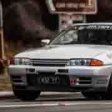Oil Restrictors For Turbos On Gtr?
Announcements
-
Similar Content
-
Latest Posts
-
Wait a sec…. You pay for bolts at bunnings? I usually just pocket the 1 or 2 bolts I’m short. everything else is courtesy of work
-
By joshuaho96 · Posted
Yes, the problem is the supply chain hasn't standardized on metric which makes it more expensive to source metric hardware. They're all mail order at this point. Fastenal is cheap but you can't exactly rock up to a fulfillment warehouse as a random D2C. Paying 13 USD in shipping for 3 nuts doesn't really make sense. McMaster-Carr and similar companies are all in a similar sort of boat. If you like gambling on mystery hardware Amazon is cheap too but you're going to be buying 25 of whatever screw you need. So Lowes/Home Depot ends up being the way to go if you really only need small quantities of hardware for odd jobs like trying to rebuild a power steering pump that calls for an m6x1.0 screw to pop out the flow control valve. -
What size bolts did you use to reattach the cam cover baffles? Thinking it will need to be M3-M4
-
Yeah one of the first things I out in when I started having catch can filling up issues. Still prefer to empty 1-2 times a track day rather than every session
-
You'll find this link is probably more useful Performance Turbochargers - Garrett - G GT GTX GTW Series Turbo TBG G35 1150 map may not even get added to my list depending on how it looks, the G35 1050 already is a mixed bag for making the numbers you would expect from the compressor map due to mismatch - I don't know how another 10lb/min of compressor flow is going to make that any better. I've left out others for similar reasons as it's already getting quite big. In terms of Precision, provide me with legit compressor maps for them and I'll do my thing I'll add some more of the newer Xona Rotor options are they're pretty boss, I'd take a 68mm Xona over a G35 "1150" any day of the week - or Precision for that matter.
-








Recommended Posts
Create an account or sign in to comment
You need to be a member in order to leave a comment
Create an account
Sign up for a new account in our community. It's easy!
Register a new accountSign in
Already have an account? Sign in here.
Sign In Now